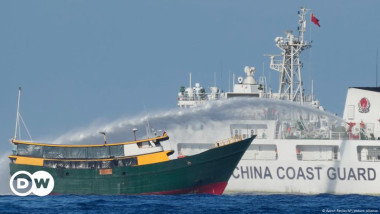China's military standoffs in the South China Sea could also impact the smooth flow of global trade
cross-posted from: feddit.org/post/2129370
Making up part of the western Pacific Ocean, the South China Sea sits between southern China, Taiwan, the Philippines, Indonesia, Vietnam, Thailand, Cambodia and Malaysia.
About a third of global maritime trade passes through the 3.5 million square kilometer (1.4 million square mile) seaway annually, according to the United Nations Conference on Trade and Development (UNCTAD).
Around 40% of petroleum products traded globally are delivered via the sea every year.
In 2016, an estimated $3.6 trillion (€3.29 trillion) worth of goods and commodities traveled the seaway, according to the Washington-based Center for Strategic and International Studies (CSIS)
. Another estimate put the figure as high as $5.3 trillion.
Researchers at Duke University in North Carolina calculated that total trade through both the South China Sea and the East China Sea — which lies between China, the two Koreas and Japan — is worth $7.4 trillion per year.
Tens of thousands of cargo vessels move through the South China Sea every year, carrying around 40% of China’s, a third of India’s and 20% of Japan’s trade with the rest of the world, according to CSIS data.
Out of all of Asia, the three countries’ economic security is most closely tied to the smooth running of the waterway. The South China Sea is a vital crossroads for both intra-Asian trade as well as for commerce with the rest of the world, especially Europe, the Middle East and Africa.
